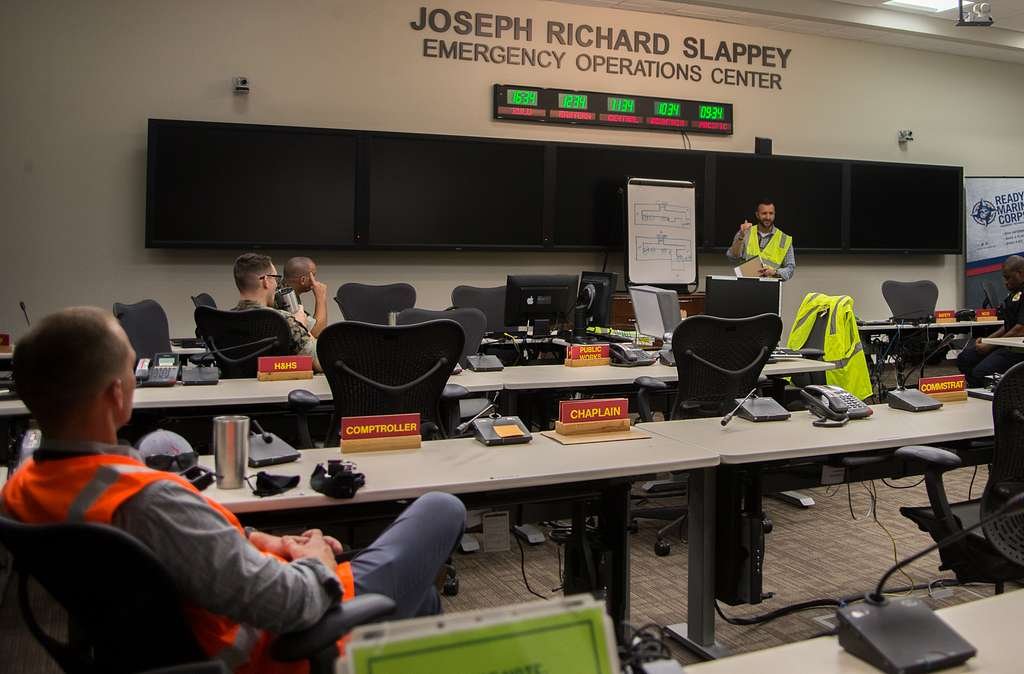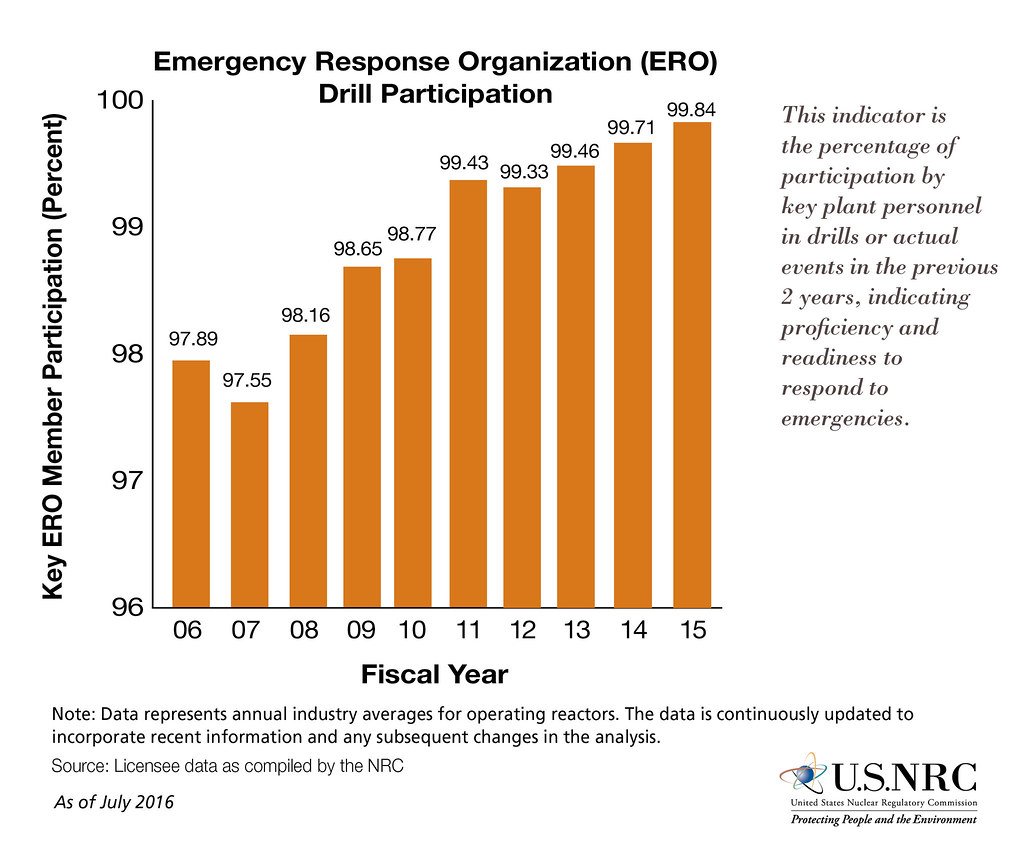In the hustle and bustle of our daily lives, it’s easy to forget the potential dangers that lurk around us. Disasters strike without warning, leaving chaos and confusion in their wake. That’s why emergency drills hold a paramount significance in ensuring our safety and preparedness. From natural calamities to unforeseen accidents, these simulated exercises are a crucial tool for individuals, communities, and organizations to fine-tune their responses and protect lives. Today, we embark on a journey through the labyrinth of emergency drills, delving into their importance and uncovering the key steps to conducting them effectively. So, buckle up, as we explore the world of preparedness and discover the art of being ready when disaster strikes.
Table of Contents
- The Importance of Emergency Drills: Ensuring Preparedness for Critical Situations
- Developing an Effective Emergency Drill Plan: Structure and Objectives
- Conducting Emergency Drills: Best Practices and Key Considerations
- Evaluating Emergency Drill Performance: Learning from Simulated Scenarios
- Continuous Improvement: Fine-tuning Emergency Drills for Optimal Preparedness
- Q&A
- To Conclude

The Importance of Emergency Drills: Ensuring Preparedness for Critical Situations
In times of crisis, preparedness can make the difference between chaos and order, between panic and safety. Emergency drills play a crucial role in ensuring that individuals and organizations are adequately prepared to respond to critical situations. By simulating emergency scenarios, these drills provide an opportunity to test response plans, assess weaknesses, and train personnel, ultimately enhancing overall readiness.
Benefits of Emergency Drills:
- Building muscle memory: Emergency drills help individuals internalize and remember the appropriate actions to take during critical situations. By practicing emergency procedures repetitively, muscle memory is created, allowing for a quicker and more effective response in real emergencies.
- Evaluating preparedness: Conducting drills allows organizations to assess the effectiveness of their emergency response plans. It helps to identify strengths, weaknesses, and areas that require improvement, enabling them to refine procedures and protocols.
- Raising situational awareness: By simulating realistic emergency scenarios, drills enhance individuals’ ability to quickly and accurately assess their surroundings during high-pressure situations. This heightened situational awareness can prevent panic and enable appropriate decision-making.
- Promoting teamwork and coordination: Emergency drills facilitate the coordination and collaboration between team members, fostering a sense of unity and ensuring efficient communication and actions during emergencies.
Ultimately, the importance of emergency drills cannot be overstated. Whether it’s a fire drill in a school or a large-scale disaster response exercise, these simulations are key to safeguarding lives, minimizing injuries, and mitigating the impact of critical situations on individuals and communities.

Developing an Effective Emergency Drill Plan: Structure and Objectives
Structure and Objectives
Developing an effective emergency drill plan is crucial for the safety and well-being of individuals and organizations. A well-structured plan ensures that all necessary steps are taken during an emergency, minimizing chaos and ensuring a smooth response. To create an organized and comprehensive plan, consider the following structure and objectives:
- Identify Potential Emergencies: Begin by identifying the potential emergencies that could occur in your specific environment. These could include natural disasters, fires, medical emergencies, or security threats.
- Assess Vulnerabilities: Once the potential emergencies are identified, assess the vulnerabilities of your organization or facility. Determine weak points, areas of concern, and potential risks that need to be addressed.
- Establish Evacuation Routes: Clearly define evacuation routes and exits, ensuring they are easily accessible and well-marked. Consider different scenarios and establish alternative routes if necessary.
- Assign Roles and Responsibilities: Determine the roles and responsibilities of individuals during an emergency. Assign specific tasks to each team member, ensuring they understand their duties and are adequately trained.
- Communicate and Coordinate: Establish effective communication channels to relay important information during an emergency. This may include implementing a clear communication protocol and utilizing technology such as two-way radios or text messaging systems.
- Practice and Evaluate: Regularly conduct emergency drills and exercises to ensure preparedness. Assess the effectiveness of the plan, identify areas for improvement, and provide feedback to all involved parties.
By implementing a well-structured emergency drill plan with clear objectives, you will be better prepared to handle any unforeseen circumstances and protect the safety of all those involved.

Conducting Emergency Drills: Best Practices and Key Considerations
In order to ensure the safety of both employees and visitors, conducting emergency drills is of utmost importance for any organization. By practicing emergency procedures in a controlled environment, individuals gain the necessary skills and knowledge to respond effectively during real emergencies. Here are some best practices and key considerations to keep in mind when conducting emergency drills:
- Establish Clear Objectives: Clearly define the objectives of the emergency drill, whether it’s assessing evacuation procedures or testing the communication system. This will help participants understand the purpose and focus of the drill.
- Create Realistic Scenarios: Simulate realistic emergency situations to challenge participants and provide a more accurate representation of how they would respond in a crisis. Incorporate factors like time constraints, limited resources, and communication disruptions to add an element of authenticity.
- Ensure Participation: Encourage active participation from all members of the organization, including management, employees, and security personnel. This ensures that everyone is familiar with the emergency protocols and their respective roles.
Remember, emergency drills are an opportunity to identify strengths and weaknesses in the emergency preparedness plan, which can then be improved upon. Regularly reviewing and updating emergency procedures based on the outcomes of these drills is essential to maintaining a safe environment for all.

Evaluating Emergency Drill Performance: Learning from Simulated Scenarios
When it comes to emergency preparedness, conducting regular drills and simulations is crucial in ensuring a well-coordinated response in real-life situations. Evaluating the performance of these drills allows organizations to identify strengths, weaknesses, and areas for improvement. By learning from these simulated scenarios, responders can refine their skills, enhance their decision-making abilities, and develop a greater understanding of the protocols and procedures necessary to effectively handle emergencies.
During the evaluation process, it is important to consider various factors that contribute to the overall performance of the emergency drill. This includes assessing the speed and efficiency of the response, coordination between different departments or teams, communication strategies, adherence to safety protocols, and the ability to adapt and make informed decisions under pressure.
Key aspects to focus on when evaluating emergency drill performance:
- Response time: Assess how quickly the emergency response team was able to react and initiate appropriate actions.
- Effective communication: Evaluate the effectiveness of communication channels and protocols utilized during the drill.
- Coordination and teamwork: Observe how well different departments or teams collaborated and coordinated their efforts.
- Following protocols: Determine the degree to which safety protocols and procedures were followed throughout the drill.
- Decision-making skills: Analyze the ability of responders to make informed decisions in high-pressure situations.
- Performance under stress: Assess how well individuals and teams performed when confronted with simulated stressful conditions.
By thoroughly evaluating the performance of emergency drills, organizations can pinpoint areas that require improvement, update protocols accordingly, and provide targeted training to enhance overall emergency response capabilities. Learning from these simulated scenarios paves the way for a stronger and more effective emergency preparedness plan, ultimately ensuring the safety and well-being of individuals in the face of unforeseen events.
Continuous Improvement: Fine-tuning Emergency Drills for Optimal Preparedness
In the ever-changing landscape of emergency preparedness, it is crucial for organizations to constantly evaluate and refine their emergency drills. These drills serve as an opportunity to enhance the effectiveness of response strategies, identify areas for improvement, and ensure optimal preparedness for any unforeseen events.
One key aspect of fine-tuning emergency drills is to regularly assess the performance of individuals and teams involved. By providing constructive feedback and conducting thorough evaluations, organizations can pinpoint strengths and weaknesses, allowing for targeted training interventions. This iterative process ensures that the capabilities of personnel are continuously sharpened, enabling them to tackle emergencies with confidence and efficiency.
Implementing varied and realistic scenarios is another vital component in the pursuit of optimal preparedness. By introducing a range of potential emergency situations, organizations can test their response protocols comprehensively. It also helps in building resilience and adaptability among the personnel, allowing them to effectively tackle diverse and unexpected challenges that might arise.
- Regularly evaluate and provide feedback to enhance individual and team performance.
- Implement varied and realistic scenarios to test response protocols.
- Continuously refine emergency drills to build resilience and adaptability.
- Stay up-to-date with the latest industry best practices and incorporate them into drills.
By staying up-to-date with the latest industry best practices and incorporating them into drills, organizations can ensure that their emergency response strategies remain effective and aligned with current standards. Continuous improvement in emergency preparedness is not only essential for the safety of individuals and the smooth running of operations, but it also inspires confidence and reassurance among stakeholders.
Q&A
Why are emergency drills important?
Emergency drills are important because they help individuals and communities prepare for various types of emergencies, ensuring that everyone knows what to do and how to stay safe during critical situations.
What are the key benefits of conducting emergency drills?
Conducting emergency drills allows for the identification of potential weaknesses in emergency response plans, increases preparedness and coordination among individuals, and fosters a sense of empowerment and confidence during real emergencies.
Who should participate in emergency drills?
Ideally, everyone should participate in emergency drills, including residents, students, employees, and other individuals who may be present in the area during an emergency. It is crucial for people of all ages and backgrounds to be involved in order to maximize safety and preparedness.
What types of emergencies should be considered when conducting drills?
Emergency drills should cover a wide range of scenarios, including fires, earthquakes, floods, severe weather, active shooter situations, and chemical spills. It is important to tailor drills to the specific risks and hazards present in the area.
How often should emergency drills be conducted?
Emergency drills should be conducted regularly, with frequency depending on the type and location of the organization. Generally, it is recommended to conduct drills at least once a year, but more frequent drills may be necessary in high-risk areas.
How should emergency drills be conducted?
Start by notifying participants in advance about the drill and its purpose. Clearly explain the objectives, procedures, and expectations during the drill. Then, simulate the emergency situation, ensuring that participants follow the established emergency response plan and evaluating their performance afterwards.
What should be done after an emergency drill?
After an emergency drill, it is important to assess what went well and what could be improved. Involve all participants in a debriefing session to discuss strengths and weaknesses observed during the drill. This feedback can be used to refine emergency response plans and enhance preparedness for future emergencies.
To Conclude
In the face of uncertainty, preparedness is key. Emergency drills play a crucial role in safeguarding our communities, equipping us with the skills and knowledge necessary to tackle unforeseen circumstances. As we navigate a world that can sometimes feel unsettling, embracing the importance of these drills becomes paramount.
Through the symphony of sirens and the choreography of well-coordinated movements, emergency drills provide a sense of unity and resilience, reminding us that no challenge is insurmountable when we work together. They empower us to confront the unexpected with a calm resolve, transforming panic into purposeful action.
But how do we conduct these drills effectively? It is not merely a matter of ticking boxes on a checklist; rather, it is a harmonious blend of preparing the mind, the body, and the heart. It begins with meticulous planning, where every detail is thoughtfully considered. From identifying potential hazards to establishing clear communication protocols, every aspect demands careful attention.
An effective drill transcends the mundane routine, becoming a nuanced performance where each participant takes on a role. With roles properly assigned, we embrace empathy, immersing ourselves in the shoes of those affected by the hypothetical disaster. It is in this embrace of empathy that we nurture a compassionate society, one that stands together in times of adversity.
It is crucial that drills provide a realistic experience – a dance between imagination and reality. By incorporating unexpected scenarios, we challenge ourselves to think on our feet, fostering innovation and quick decision-making. Amidst the chaos, we learn to adapt, to pivot, and to find strength we might not have known we possessed.
Remember, the purpose of these drills is not to instill fear but to cultivate preparedness. They instill confidence, ensuring that even when life throws its curveballs, we remain undeterred. In practicing these routines regularly, we create an atmosphere of calm assurance, where fear gradually dissipates, replaced by resilience.
So, let us embrace the significance of emergency drills, recognizing the collective responsibility we bear for the safety and well-being of ourselves and our communities. Let us strive for excellence in preparedness, for through the meticulous planning and dedicated execution of these drills, we unlock our true potential.
As we conclude this discourse, may we remember that our ability to face the unexpected rests not solely on the drills we conduct, but on the indomitable spirit we bring to each moment. With our hearts prepared and our minds open, we stand ready to face any challenge that may come our way.
As an affiliate, my content may feature links to products I personally use and recommend. By taking action, like subscribing or making a purchase, you’ll be supporting my work and fueling my taco cravings at the same time. Win-win, right?
Want to read more? Check out our Affiliate Disclosure page.